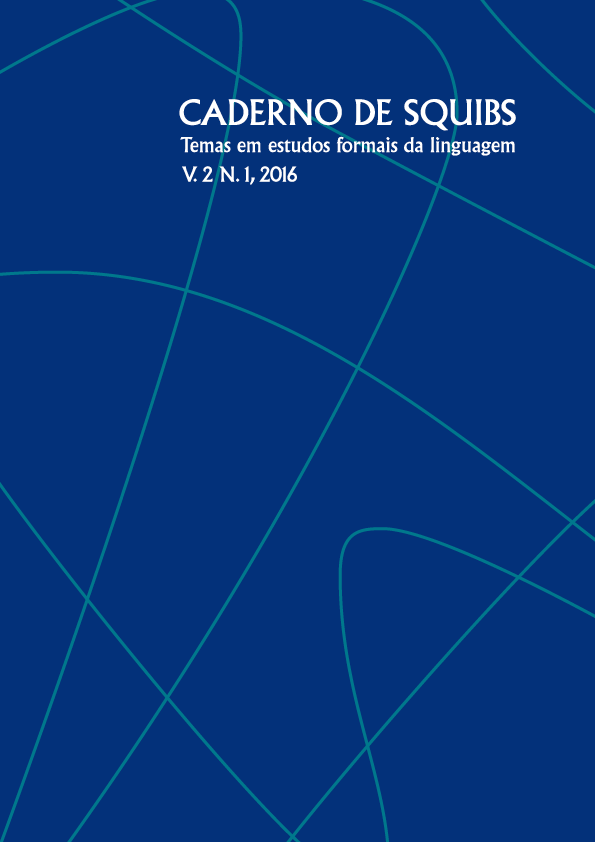The definite article and its positions in the structure of the DP: evidence from Irish English and Alemannic
Palavras-chave:
estrutura do DP, definidos fracos, genericidade, variedades faladas (não padrão) do inglês e do alemãoResumo
Neste squib, a comparação entre as variedades padrão e não padrão do alemão e do inglês prove evidências para uma estrutura refinada do DP no que diz respeito ˆÃ posição ocupada pelo artigo definido. Alem do fato de que posições diferentes refletem a já conhecida distinção entre as leituras genérica e dêitica, argumentarei que apenas os determinantes dêiticos estão localizados em D, enquanto os chamados definidos fracos ocupam uma posição mais baixa. Essa posição, rotulada artP, seria a projeção funcional mais alta em expressões nominais, que são não dêiticas. A estrutura sugerida é uma elaboração da estrutura desenvolvida por Borer (2005).
Downloads
Referências
BORER, H. In name only. New York: Oxford University Press, 2005.
BORIK, O. & ESPINAL, T. M. Reference to kinds and to other generic expressions in Spanish: definiteness and number. The Linguistic Review, v. 32, n. 2, 2015.
CARLSON, G.; SUSSMANN, R.; KLEIN, N.; TANENHAU, M. Weak definite noun phrases. Proceedings NELS, 2006.
EPSTEIN, R. The definite article, accessibility, and the construction of discourse referents. Cognitive Linguistics, v. 12, n. 4, 2001.
FILPPULA, M. Changing paradigms in the study of Hiberno-English. Irish University Review, v. 23, n. 2, 1993.
FILPPULA, M. The Grammar of Irish English. Language in Hibernian Style. London and New York: Routledge, 1999.
HAWKINS, J. A. Definiteness and indefiniteness: a study in reference and grammaticality prediction. London: Croom Helm, 1978.
HICKEY, R. Irish English: History and present-day forms. New York: Cambridge University Press, 2007.
LONGOBARDI, G. Reference and proper names: a theory of N-movement in syntax and logical form. Linguistic inquiry, v. 25, n. 4, 1994.
POESIO, M. Weak definites. Proceedings of the Fourth Conference on Semantics and Linguistic Theory, SALT 4, 1994.
QUIRK, R.; GREENBAUM, S.; LEECH, G.; SVARTVIC, J. A Comprehensive Grammar of the English Language. New York: Longman, 1985.
ROEHRS, D. The Morpho-Syntax Of The Germanic Noun Phrase: Determiners Move Into The Determiner Phrase. Doctoral dissertation, Indiana University, 2006.
SABBAN, A.Gaelisch Englischer Sprachkontakt. Zur Variabilitat im g ¨ alischsprachigen Gebiet Schott- lands. Heidelberg: Sammlung Groos, 1982.
SCHWARZ, F. Two types of definites in natural language. Open Access Dissertations, 2009.
WILTSCHKO, M. What’s in a determiner and how did it get there? In: GHOMESCHI, J.; PAUL, I.; WILTSCHKO, M. (Eds.). Determiners: Universals and Variation. Amsterdam, Philadelpha: John Benjamins, 2009.
Downloads
Publicado
Edição
Seção
Licença
Autorizo a publicação de squib/artigo de minha autoria e inteira responsabilidade para publicação.
I authorize the publication of the squib/paper of my authorship and full responsibility for publication.


